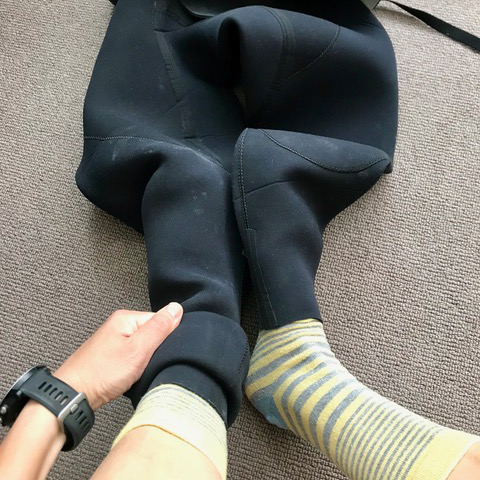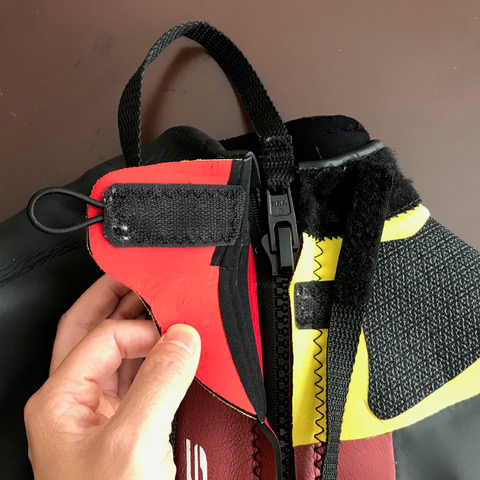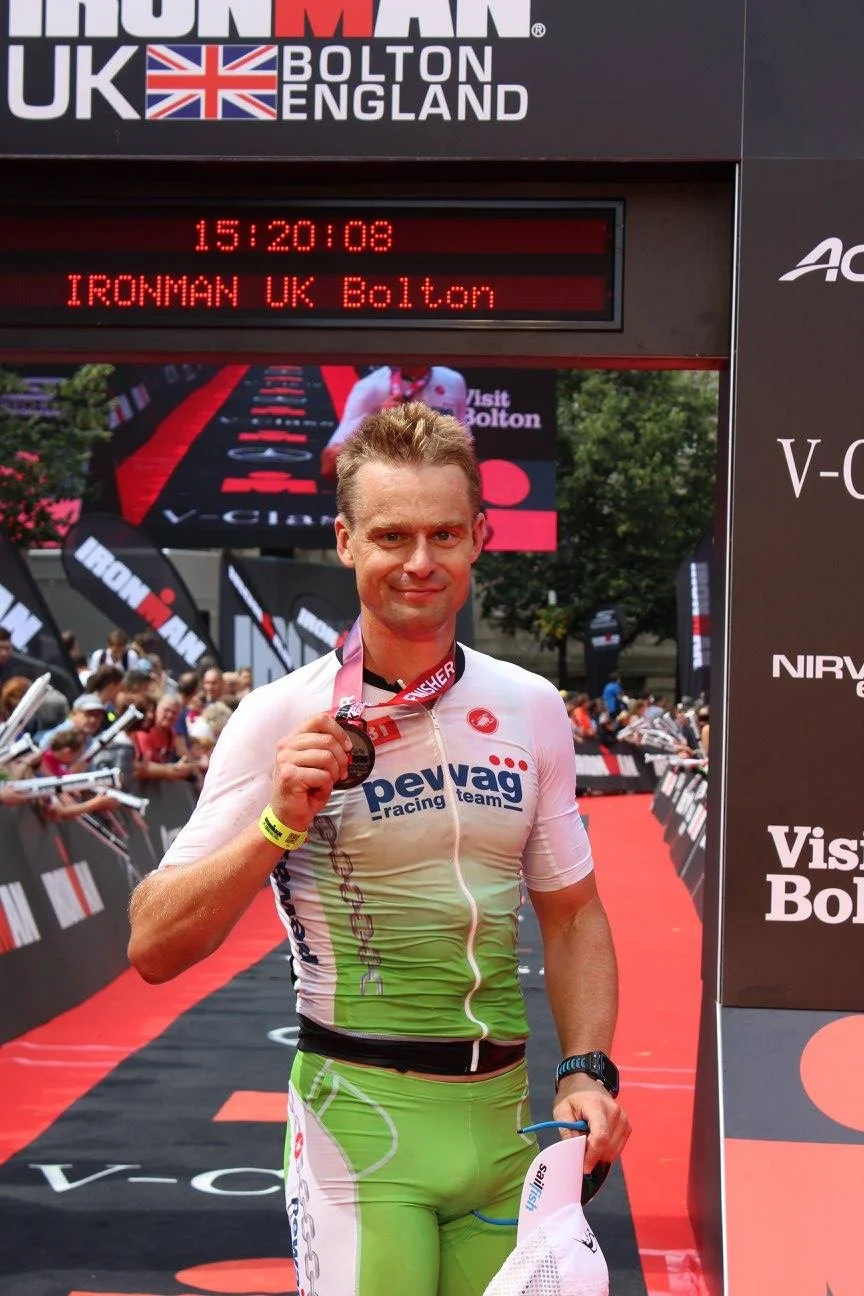Open Water Swimming Tips
Open Water Swimming Tips
Now the triathlon and Open Water Season is in full swing, if you’re feeling slightly anxious, here are a few tips from our soft tissue therapist and Triathlon coach, Emily Chong, to help your training and competing:
Practice, practice, practice!
Find some open water to train in before your event and get used to lower visibility and the natural environment.
Practice in your wetsuit. Wear your goggles under the swim cap, or better yet wear two caps and have the goggles sandwiched in between (less chance of them getting knocked off).
Starting in a race
If it is a deep water start, get yourself horizontal, gently kick your legs and scull with your arms out stretched. When the horn goes, you’re in the right position to take a few strong kicks and pull forward.
If you prefer not to be in the crowd, go to the side and swim wide of the turning buoys.
Swimming in a wetsuit
When swimming in a wetsuit, relax your elbows so you’re not fighting the neoprene, straight arm recovery is absolutely suitable for open water.
Focus on engaging your gluteus muscles (clench your bottom!) keeping your legs together and make sure your core is long and engaged. Imagine doing a plank and you should feel your legs rubbing at thigh, calves and toes just touching.
Use body rotation to lengthen your stroke, entering your hands in 10 o’clock and 2’ o’clock position. This helps engage your back muscles to swim. Imagine doing a pull up - it’s almost impossible with our hands together, but with your hands slightly wider than shoulders, you will have much more power to pull yourself up.
When you get into the water, splash your face and the back of your neck. Put your face in and slowly exhale. If you have a tendency to panic, take some time to do this until you feel your heart rate has calmed down.
Sighting
While waiting to start, look at the course and find something in the landscape that lines up with the buoy markers to sight for. Something like a hill or a tall colourful building so it would only take one glimpse to see (buoys may seem big, but once you are horizontal amongst splashing swimmers, they can be hard to spot).
Think crocodile eyes, try not to lift your head too much or your legs will sink, making swimming harder. Find a pattern to suit your breathing / sighting.
Plan B
If you feel your chest is too tight / your goggles get knocked off / you are cramping, roll on to your back, take some deep breaths, readjust yourself, once you feel ready, roll back to your front and carry on. If necessary, hold one arm in the air, the safety kayak will come to your rescue.
Finishing
As you approach the pontoon, speed up your kick a little to activate your legs and to get blood flowing. Take it easy going from swimming position to standing up position, you may feel a little dizzy due to blood going from the top half of your body down to your legs.
Undo neck velcro on your wetsuit and pull the cord to open the zip. Grab the neck opening and pull your arm out of the wetsuit. If your wetsuit gets stuck at your wrist, loop it around your knee and use it to pull it out. If you already have your cap and goggles in your hands, great! they can stay inside the wetsuit sleeve till after the race.
Pull down wetsuit from the waist, side step and stand on your wetsuit several times to get your feet out.
Done! now go and enjoy your ride and run (or post race celebration).
How to put on a wetsuit
Use a glide stick or other thick lubrication (Rock Rub is my favourite) and generously rub it over your forearms, calves, quads and hamstrings and around your neck.
Put some cotton gloves on to avoid nicking your wetsuit with fingernails. If possible always grab the inside material to pull rather than the smooth outer side of the neoprene)
Turn the bottom half of your wetsuit inside out.
Keep your socks on (or put each foot into a plastic bag), and put your feet into the leg holes and roll up the legs. (Remember the zip should be at the back!)
Pull the wetsuit up to your waist.
Ideally, find someone who can grab the wetsuit from behind and pull it up as though they were going to give you a “wedgy”. Otherwise, do that yourself, keep pulling up until the crotch area is more than snug.
Put one arm in, pull it up to your shoulder, then put the other arm in.
Ideally, get someone to “shoehorn” you in from behind. They should put their hands on the back of your shoulder / upper arm and pull the wetsuit back to create more space in the chest.
If there is nobody to help you, bend the elbow, grab the crease and ease more material towards your shoulder until the zip is fairly close together at the back.
Once both arms are shoehorned in, the back zip should be quite close together without having to pinch your shoulder blades together (if not, you will probably struggle to breathe). Now you can zip it up.
If it feels like it’s restricting your neck, bend forward, grab the crease and ease more material towards your chest.
Make sure the zip is in “up” position, loop the cord over the neck velcro and stick the end of the cord in it, so you know where to find it when you need to take it off. (Remember to take your socks off!)



Call us on 02030 12 12 22 to book an appointment if you have any injuries or niggles or if you'd like a pre- or post-race sports massage.
Words and images by Emily Chong.
Client News: Toby Swims The Channel
Physio Remedies client Toby Davis planned to swim The English Channel at the end of July in aid of The Cystic Fibrosis Trust but the weather wasn't playing ball during his window. However, he did eventually get the call to swim and his Channel Swim Report follows.
Finally, I'm off!
After a frustrating two week wait for the weather, at 11pm on Monday 7th August I finally lowered myself off the boat and walked up Shakespeare Beach (just around the corner from Dover Harbour) to clear the water feeling calm and relaxed, reminding myself to enjoy what might well be a once in a lifetime experience. Then the klaxon sounded to signal the start of my 21 mile channel swim from England to France and we were off - I dived in and swam out to my boat SUVA's spotlight in the water, which I would use as a marker over the next 6 hours of darkness.
Ready for the off!
The first few hours
That first few minutes were exhilarating but I managed to control the adrenaline and settle into a decent rhythm fairly quickly. I fed every hour and my first feed was very quick - a quick roll onto my back, down the carb drink and confirm to my crew that I felt good, then off again. About 15 seconds, which was the plan. Over the whole swim it turned out my longest feed was 40 seconds and average time about 20 secs which I was very pleased with.
After the first feed the next 2.5 hours flew by and I knew it was going well. Swimming in the dark was fun, it gave me the opportunity to solely focus on getting my stroke right and making sure I was enjoying the swim as planned.
Hour 4
Around hour 4 it started to feel a bit more of an effort and, when I stopped for a feed I realised why - suddenly where before I had been floating on my back next to the boat, now when I did that I had to kick furiously just to stay alongside. That brought home just how strong the tide I was swimming in was, and ended any over optimistic thoughts in my head about the possibility of making it across in a super quick time.
Around this time I also got some jellyfish stings to my back, legs, shoulder and most interestingly across my mouth and nose - I didn't really mind these actually, they were a bit like an extra strong stinging nettle and helped jolt me out of any autopilot swimming.
Sunrise
Around 5:30am we were treated to the most amazing sunrise which brought the darkness section of my swim to a dramatic end. To witness that from sea level in the middle of the channel was truly spectacular.
I am a very dark shadow in the foreground in this one but quite rightly the sunrise takes centre stage!
Hour 11
I swam steadily and pretty comfortably until the 11th hour when my crew told me they needed a big push in terms of effort. So I sprinted at 100% for an hour, which felt like forever. The fascinating thing was that, despite having swum for 10 hours already, every time my brain told me I needed to slow down I could override it and just kick harder.
Unfortunately the spring tide turned out to be too strong for me to fight across it and hit land at Cap Gris Nez, which tends to be the fastest place to end a crossing. So I found myself being swept up the coast by a strong turned tide, which meant the sprinting had to continue as I tried to fight far enough through it to hit land.
Hour 13
Around hour 13 I got frustrated as France had seemingly disappeared from view (it was actually hiding behind the boat on my right as I got swept north past the Cap) and I asked for a marker to give me an idea of how close I was. Neil my pilot told me I was deep into French inshore waters, and shortly after that the coast came into view again seemingly within touching distance.
Despite being no more than a couple of kilometres out, I spent another 2 hours pushing across the tide to get in - that time actually went quite quickly as I knew that I would get in eventually and that it was just a matter of time. I had to stop myself celebrating in my head though as I knew lots of swimmers still failed to hit the shore from that close. But finally I got close enough to see the houses and beach on the shoreline and knew I was swimming into Wissant.
Me sprinting against the ferry
The final 20 minutes!
The last 20 mins were pretty special, just making the most of the experience and thinking about all of the people who had supported me through the months and months of training. It got slightly emotional. I could walk up the last 50 metres and had a great time running and jumping through the waves to stand clear of the water for the klaxon to sound the end of the swim after a total of 15 hours 04 minutes!
Channel Swimmer!
It felt incredible to have finished the swim and even better that physically I still felt pretty good. I could easily lift my arms above my head and hold up my 4 month old in celebration once we got back to Dover, which I think is a good result!
The team - Neil the pilot, Toby the co-pilot, Kate, me, Alice and Tony the official observer
I was back in the water (with pain free shoulders) within 2 days which was a huge bonus and a ringing endorsement for Ray Gibbs' coaching and the technique work he has done with me, as well as the excellent physio I had received in advance of the swim from Sarah Lawson at Physio Remedies.
Now to relax a bit and work on my future swim bucket list with a cold drink in hand!
Toby's Channel Swim has raised over £10,000 to date. If you're as impressed as we are at Toby's feat, you can donate to The Cystic Fibrosis Trust via his Just Giving page.
Words and images by Toby Davis.
FRASER CARTMELL: IRONMAN 70.3 STAFFORDSHIRE PRE RACE POINTERS
For those of us racing Ironman 70.3 Staffordshire (and that includes me too) it is now Race Week! Hopefully the previous few weeks and perhaps months of preparations have gone fairly smoothly (we all have bumps in the road, that’s just life!) and you are now looking forward to enjoying all of your efforts on race day.






